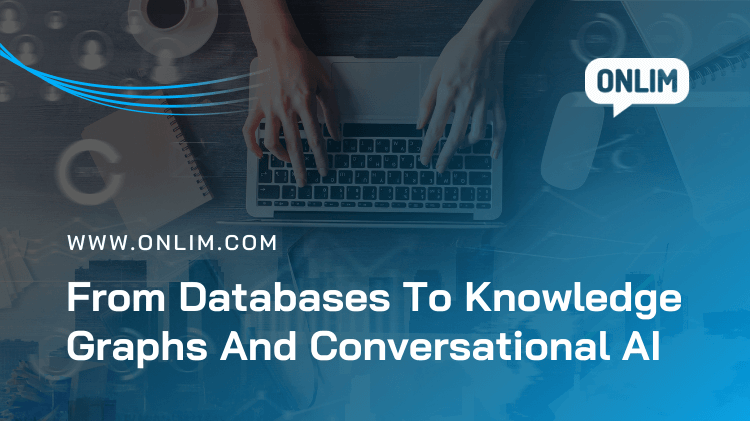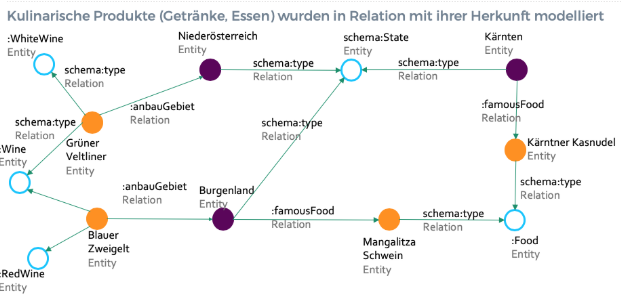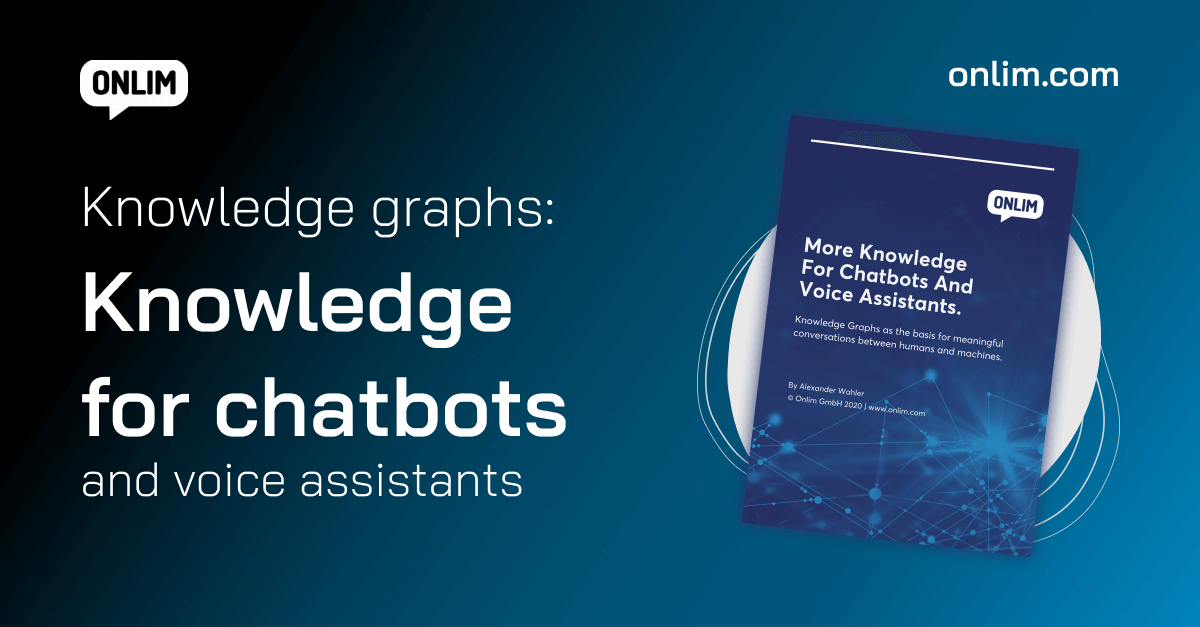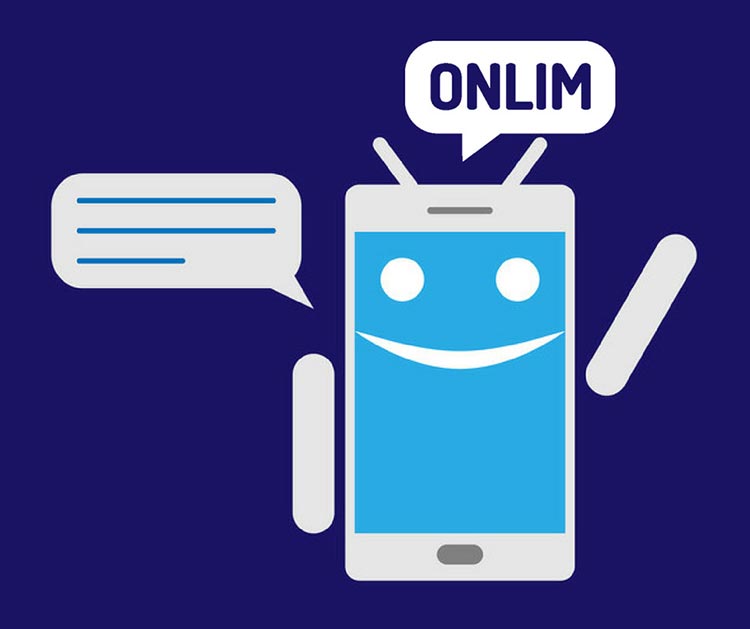From Knowledge Databases To Knowledge Graphs And Conversational AI
How to leverage your company data effectively in times of digital transformation and make it available through Conversational AI!
“Onlim Assistant, what do our current sales figures look like?” “In the last quarter the company made 10.4 million Euros. That’s 10% more than in the previous quarter and 5.2% more than in the same quarter of 2019. With a predicted market growth of 1.3%, we are growing four times faster than the market”, says the in-house voice assistant. “All right, great,” you answer and continue with the board meeting.
Imagine having questions like these answered during a meeting. No more annoying “We’ll get back to you” and follow-ups.
Your in-house voice assistant knows all the necessary data and can provide answers in real-time – all you have to do is ask. How much more efficient would that make your meetings?
Sounds too good to be true? But it’s not. You will soon be able to implement such a scenario in your company, but first, you have to take 3 important steps/measures, which we will discuss in this article.
You’ll also learn how Onlim can support you with the various steps from knowledge management, to preparing knowledge with knowledge graphs and making it available through Conversational AI. But before, let’s have a look at how current developments call for better data management.
Corona crisis & home office: Decentralized work requires a centralized knowledge database
The sudden outbreak of the Corona crisis practically made a worldwide workforce switch to home office mode overnight. When companies work from various locations and the informal exchange in the kitchen or at the copier is completely eliminated, it is all the more important to build up a digital knowledge base in a company.
This starts with data stored in different locations, which can (and must) be made accessible more easily and quickly through a digital knowledge base. After processing it and making it readable for machines, this information can most easily be retrieved via natural language using a chatbot or voice assistant.
Our vision is that employees can simply ask a voice assistant (like a colleague) and receive all the necessary information from them. This can be information for employees as well as for external sales partners or for customer service.
No more data swamps – draw on unlimited resources!
Data is the raw material of the 21st century. Every company has vast amounts of data and information in digitized form, for example in manuals, FAQs, guidelines, instructions, or databases.
In most companies, however, these treasures are scattered across different departments. There is no overview of what data is available and often, it takes way too much time to find answers even to the most common questions.
To truly leverage your company data in times of digital transformation, you need to take the three following steps.
1. Build an internal knowledge database
In the course of digitization and mostly as part of big data projects, some companies have started to collect or pool their existing data in an internal data lake. In many cases, however, it would be exaggerated to speak of a knowledge database as data lakes usually become data swamps, a place where data rests unused.
It is not enough to collect data in digital form. The data must be mapped with semantics and context.
Nevertheless, the internal knowledge database is an important first step that Onlim will be happy to assist you with. However, an internal knowledge database lacks a practical structure that makes the data readable for machines, which is essential for data and information to be transformed into knowledge that can be accessed via a chatbot or voice assistant …
2. Prepare the knowledge database in form of a knowledge graph
The secret to the effective preparation of data lies in the technology of knowledge graphs. You can learn more about how Onlim uses knowledge graph technology here.
But what exactly is a knowledge graph? And how is it structured?
Let’s imagine a simple Excel spreadsheet to illustrate how it works. In an Excel table, you allocate headings to individual columns (characteristic values) such as date and address and fill in the corresponding data set. If you then interlink individual columns so that queries can be made across several columns, you already have a simple database.
A knowledge graph originates from the further development of a database. But in a graph information is structured in such a way that it turns into knowledge. Instead of simple columns and links, this semantic knowledge database consists of nodes and edges. The nodes represent entities that are assigned attributes, while edges describe the type of relationship between these entities. Together, nodes and edges are placed in thematic contexts (ontologies).
A knowledge graph makes data readable for machines
Through the enrichment of data (data enrichment) with annotations, the use of specific schemes, as well as semantics and context of information, data in the knowledge graph becomes machine-readable and usable for Conversational AI.
The search engine giant Google has been using knowledge graphs since 2012. In fact, they have processed all indexed search results into a huge knowledge graph. If Google can give you the opening times of your local supermarket straight away, then this is due to the excellent structure of the data.
Advantages of using knowledge graphs
Knowledge graphs offer two important advantages:
- Data can be updated and renewed at any time, which means that the dynamic character of company data can be addressed.
- Knowledge graphs are easily scalable. This means that you are prepared for the continuously increasing data volume and the number of requests in the future.
The fact that technology giants and innovative service providers like Google, Facebook, and Uber are using this approach, gives you the certainty that you are heading in the right direction. By preparing your own data according to Schema.org in the Knowledge Graph, you can also improve your ranking on Google.
If you would like to learn more about the preparation of data for Conversational AI with Schema.org, our data scientist explains more in this article.
Why you might not have heard of “Knowledge Graphs” before
You may be wondering why, with all the hype about digitization, you have never heard of knowledge graphs. Well, this technical concept is less easy to market than the attractive tools that build on it.
In 2017, chatbots were gaining huge momentum, especially through Facebook. Their big breakthrough did not materialize, however, according to the “GARTNER Hype Cycle”, their use has calmed down a bit. Chatbots are now a commodity.
Learn more about the chatbot hype cycle and what to expect after the hype here.
Knowledge graphs are not a hype, but rather an innovative data structure that has been overlooked by the media. It will lead to sustainable changes in the economy and society in the long run. Together with Conversational AI, this technology is in the process of initiating massive transformation processes in companies.
The consolidation of data and its preparation in the form of a knowledge graph is the perfect basis for the development of further services. With the primary aim of making knowledge that has been collected immediately available through natural language.
3. Make knowledge retrievable in natural language with chatbots & voice assistants
In the next step, the first prototype of a chatbot or voice assistant can be developed. This allows users to access the knowledge displayed in the knowledge graph via Conversational AI in dialog form.
Develop your first prototype of a voice assistant
We at Onlim always recommend interested parties and customers to test the use of a voice assistant in the company with an initial use case. This is the fastest and best way to prepare for the future of Conversational AI.
By the way, here you can learn more about the current state and future of Conversational AI.
In fact, you’re starting a lot more than just an interesting prototype. You will gain valuable experience with regard to use, possible applications, knowledge gains, and increases in efficiency. And even more important: You are kicking off a comprehensive transformational company process that should start sooner rather than later.
By using a chatbot or voice assistant on your company website, in messenger services, via telephone systems or smart speakers, you also generate many inquiries from users. You can then analyze and evaluate them using the integrated analytics of the Onlim platform. You can see which questions (and their wording) your users ask most frequently. This allows you to gain valuable insights into customer preferences, product functions and more. Learn more about our analytics platform here.
Conversational AI for precise access to knowledge in the knowledge graph
The last mile towards the realization of the vision described above mostly depends on Conversational AI. Conversational AI must ensure that not only the words but also the intention (the intent) of the user and its context are correctly understood and interpreted.
Here we can help you with our extensive (and constantly growing) database of example sentences (so-called “Utterances”). At the same time, the early use of first prototypes, which can be used to collect valuable data regarding user inquiries, has proven itself.
To learn more about how we can support your company with the preparation of data and more, talk to one of our experts.
Conversational AI meets Knowledge Graphs – The technical explanation
Do you remember when I described a knowledge graph as a more complex database? In regard to Conversational AI, we ensure that the correct intents and utterances (sample questions & examples) are added as annotations to your knowledge graph.
We can already carry out this process semi-automatically for you. And in 1-2 years we want to be able to configure the automatic creation of a knowledge graph via a Conversational AI system. Onlim has invested a lot of time and research in this area so that the quality and scalability of the results can be guaranteed.
By the way – if you would like to find out more about knowledge graphs, their significance for Conversational AI, and specific use cases, download our whitepaper.
Another point to focus on is to build systems that scale. Because there will be more and more dialogues and information out there in the future. The topic of conversational commerce, in particular, will become very important in the future, as we can already see today with the example of buying products on Amazon via Alexa.
Chatbots are here to stay
Chatbots and voice assistants are proving themselves more and more and use cases keep increasing. As a result, customers and end-users (consumers) are getting used to the advantages of voice-based search: fast and convenient access to relevant information.
Yes, there are still some problems and the technology is not fully developed. But as a company, you have to get yourself out there not to be left behind in the end. As KODAK missed the age of digital images, one cannot miss the trend of Conversational AI.
Start the organizational learning process now
If you start early, you might make a few more mistakes, but you will benefit from this head start later. Every company has to go through a learning process when it comes to the handling of new technologies. And it is the same with data management, knowledge graphs, and Conversational AI.
Latecomers may be able to start on an even more sophisticated platform. However, there are no shortcuts to an organizational learning process. Therefore, in the end, companies that keep waiting will be miles behind the pioneers.
A look at the automotive industry shows that Tesla’s decades of preparatory work on electromobility is paying off. It allowed them to leave all the other car manufacturers behind and be well equipped for the future of electromobility, while VW & Co are desperately trying to make up for the time they lost.
Conclusion
Knowledge graphs are the foundation for the leap into a new age. Chatbots and voice assistants are more than a new tool. They entail a comprehensive transformation process that will permanently change the way in which we obtain information and manage knowledge.
Every journey begins with a first step. Regardless of whether you are faced with building a knowledge database, developing a knowledge graph, or implementing Conversational AI in the form of your first chatbot, we at Onlim are happy to advise and support you.
If you want to deal with knowledge graphs on a technical level, we recommend this book on Knowledge Graphs published together with some of our employees.
What are Large Language Models (LLMs)?
March 18th, 2024|
What are chatbots and how do they work?
November 23rd, 2023|
The AI Act and its impact on the use of chatbots
October 27th, 2023|





